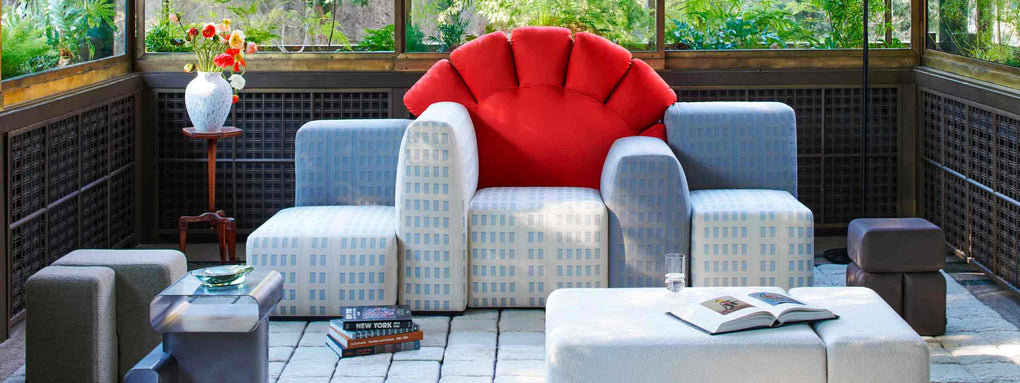Marco Serralunga interviewed by Cristina Morozzi
Read the interview with Marco Serralunga, owner of the historic company Serralunga, world leader in the production of outdoor furniture and pioneer in the use of innovative technologies.
Marco Serralunga holds a degree in economics and owns Serralunga, a company with 28 employees that specializes in outdoor furnishings. I spoke with him about his company, which has made a name for itself thanks to its innovative production processes and collaborations with renowned international designers.
M.S.
My father imported the rotational molding technique from the United States in 1984. We were the first company in Europe to use it as we were trying to combine aesthetics with advanced technology. Right away, we started making pots and vases for plants which until then had been made of terracotta using traditional production processes that consume a lot of energy as terracotta needs to be fired at high temperatures. With the help of my wife, Luisa Bocchietto, we involved famous designers who hadn’t yet ventured into the world of outdoor furnishings. We made our debut with our first large vases, designed by Denis Santachiara, at the Triennale Design Museum in Milan during the Salone del Mobile, with an exhibition called “Essere e benessere”, promoted and curated by magazine Interni. Those large vases were a hit and inspired us to focus on Italian products. We were pioneers and many have followed in our footsteps.
C.M.
Tell us how the company has evolved since then.
M.S.
We continue to make vases, including large ones, both for plants and with internal lighting systems so they can be used as outdoor lights. We also have a varied range of outdoor tables. 40% of our collection is vases of various sizes, 40% is outdoor furniture, and 20% is lighting, most of which are illuminated vases.
C.M.
What are the finishing processes?
M.S.
We aren’t able to lacquer our rotational molding products. We’ve patented a material, called Moleskin, in our laboratories. It's produced from the processing of leather and gives our products a special feel and appearance. Moleskin resembles a textile and recalls robust moleskin fabrics, it’s warm and comfortable and it almost feels like velvet or buckskin. It’s 100% recyclable, resists high and low temperatures, and is easy in terms of upkeep. We currently offer it in three colors: gray, rose and mediterranean.
C.M.
A recurrent question in today’s world: what are your policies on sustainability in terms of your processes and products?
M.S.
Our outdoor series are all second life products, or materials obtained from recycling. We use solar panels for power. I would say that as a company, we also keep in mind the health of the planet.
C.M.
Who are the designers the company collaborates with?
M.S.
Paolo Rizzato, Christopher Pillet and Marc Sadler are some of the ones we’ve worked with the longest. Then there’s the new generation of designers, like Raffaella Mangiarotti, who also worked on revamping our catalog, and Patricia Urquiola, who introduced a finish with a special antique effect.
C.M.
Since you collaborate with well-known designers and have always had an eye for form, what are your thoughts about the future of design?
M.S.
I would say that unfortunately 80% of products designed are useless. Aesthetics are fundamental, even in consumer products, but they shouldn’t be an end in themselves. The aspects to consider when beginning a production process are the features of the material used, the technologies that can be employed, functionality and safety. Today, it’s really important to combine innovation with tradition in a trend I might call ‘modern vintage’. I think we should reject extremism, favoring a simpler and more immediate philosophy. Identity is very important and it’s better to build collections with a common theme. It’s also important to build a strong yet flexible identity that can adapt to change, and to keep your eyes open, not just in your own sphere, and to have a welcoming approach.
Serralunga Collection is available on Design Italy.
Cristina Morozzi





